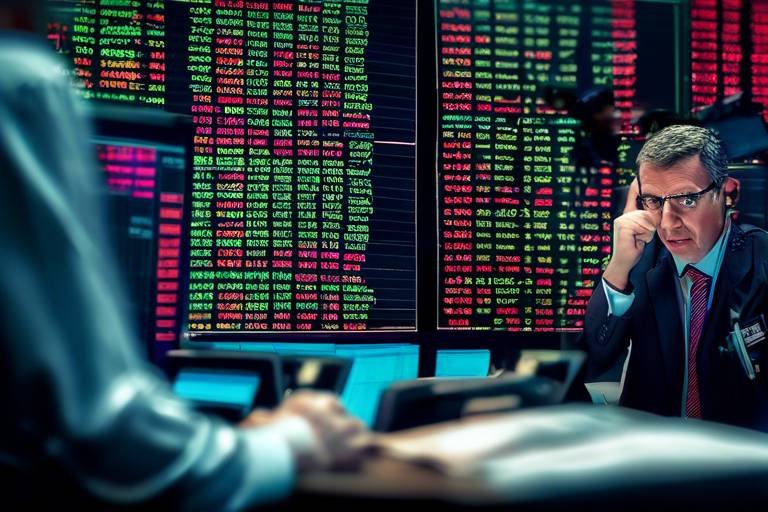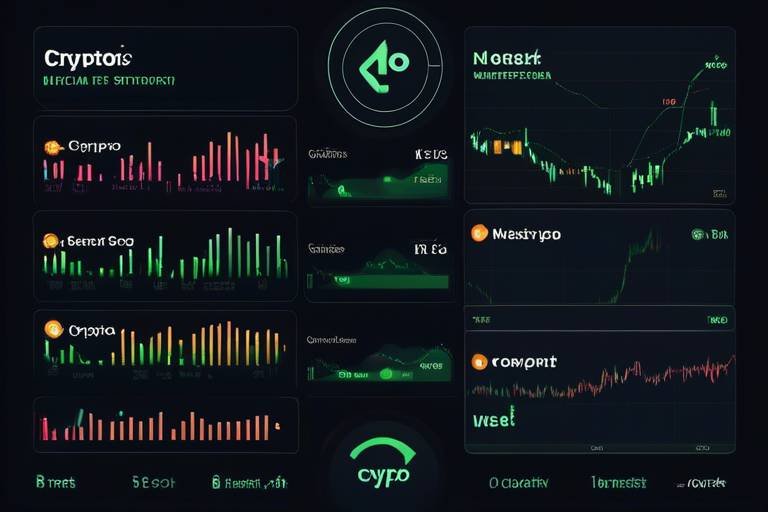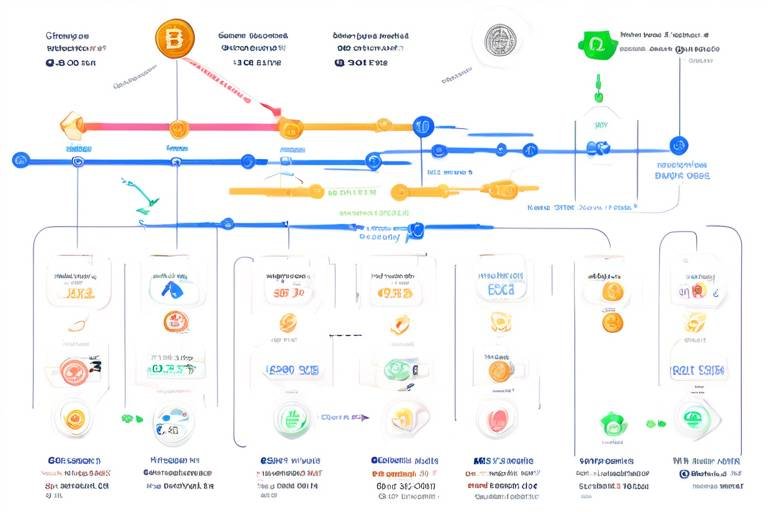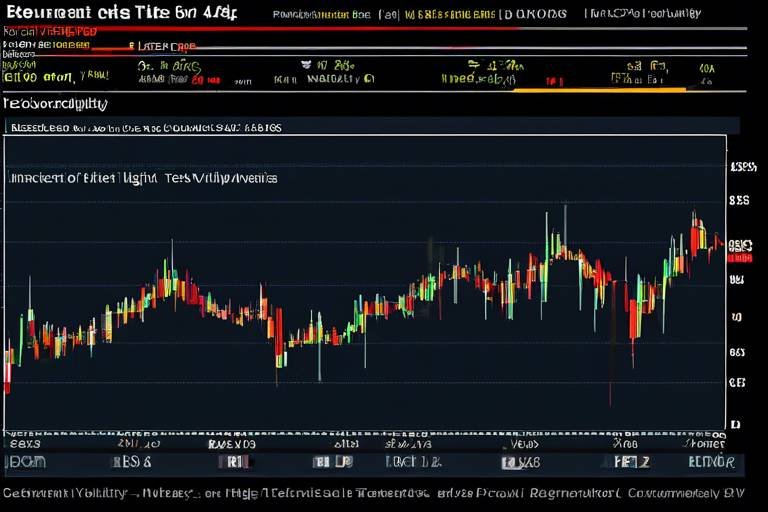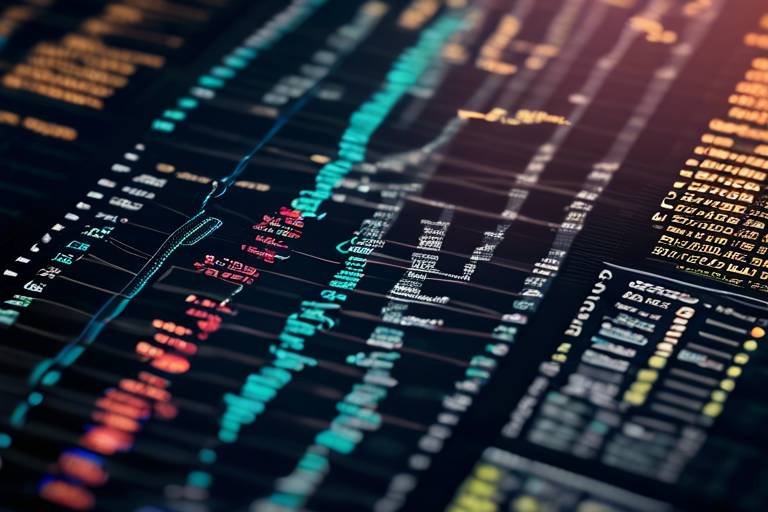The Importance of News Analysis for Technical Traders
In the ever-evolving world of trading, being a technical trader means you rely heavily on charts, indicators, and patterns to make informed decisions. However, what if I told you that one of the most crucial elements of trading lies beyond the charts? That’s right! News analysis is a game-changer for technical traders, providing insights that can enhance trading strategies and lead to better decision-making.
Imagine you’re sailing a ship; your charts are the maps guiding your journey, but the weather forecast—representing news analysis—can either make your trip smooth or send you crashing into a storm. In this article, we’ll explore how news analysis enhances trading strategies by improving risk management and market understanding. By the end, you’ll see why integrating news with technical analysis is not just beneficial but essential for any serious trader.
So, let’s dive into the fascinating world of news analysis and uncover how it can elevate your trading game. Are you ready to transform your approach and navigate the markets with greater confidence? Let’s go!

Understanding News Impact on Markets
In the fast-paced world of trading, understanding how news impacts the markets is nothing short of essential. Imagine trying to navigate a ship through stormy seas without checking the weather forecast—pretty risky, right? Similarly, traders who ignore news events may find themselves at the mercy of unpredictable market movements. News events, whether they are economic reports, geopolitical developments, or corporate announcements, can trigger rapid price changes and create opportunities or pitfalls for traders.
To grasp the full impact of news on the markets, it's important to recognize the various types of news that can sway investor sentiment and market direction. For instance, economic reports such as GDP growth rates, unemployment figures, and inflation data can serve as critical indicators of a country's economic health. When these reports are released, they often lead to immediate reactions in the market as traders adjust their positions based on the new information. The relationship between news and market movements is not just a simple cause-and-effect; it often involves layers of interpretation and expectation.
Geopolitical events, such as elections, conflicts, or trade negotiations, can also create significant volatility. Traders need to be aware of these events and their potential implications. For example, an unexpected election result in a major economy can lead to sharp currency fluctuations, as investors reassess the political landscape and its impact on economic policies. Similarly, natural disasters or significant international incidents can disrupt supply chains and affect commodity prices, leading to broader market shifts.
Corporate announcements, including earnings reports or product launches, play a pivotal role as well. When a company releases its quarterly earnings, the market often reacts quickly based on whether the results meet, exceed, or fall short of expectations. A positive earnings surprise might lead to a surge in stock prices, while a disappointing report can trigger sell-offs. Traders who stay informed about these announcements can position themselves advantageously, leveraging the information to maximize profits or minimize losses.
In summary, understanding the impact of news on markets is a multifaceted endeavor that requires vigilance and a keen sense of timing. Traders who effectively analyze news events can anticipate market movements, make informed decisions, and ultimately enhance their trading strategies. By integrating news analysis into their trading approach, they can navigate the complexities of the market with greater confidence and precision.
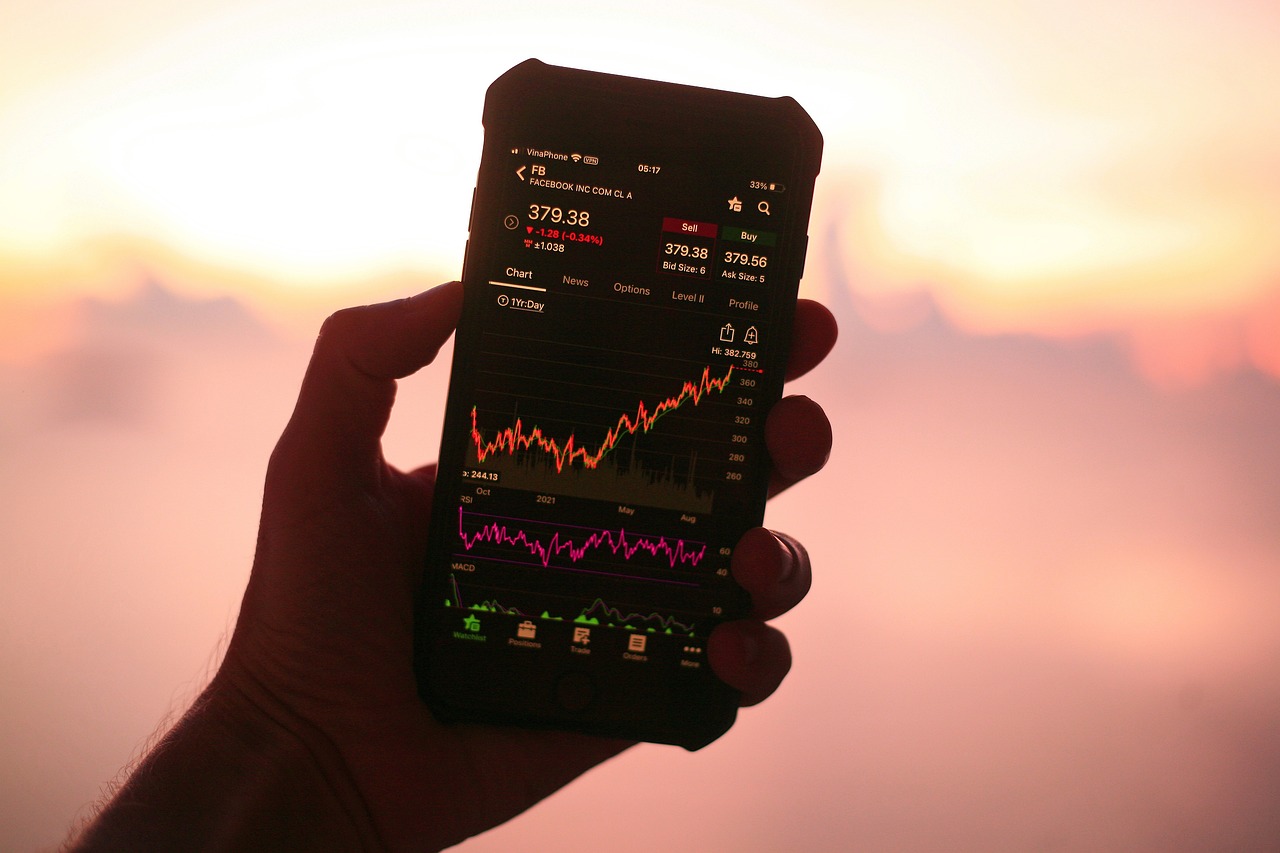
Integrating News with Technical Analysis
In the fast-paced world of trading, the ability to integrate news analysis with technical indicators can be the difference between a winning and losing strategy. Technical traders often rely heavily on charts and historical price data, but ignoring the news can lead to missed opportunities or, worse, significant losses. Imagine trying to navigate a ship without considering the weather; it’s a recipe for disaster. By blending these two approaches, traders can create a more robust framework for making informed decisions.
When we talk about integrating news with technical analysis, we’re not just throwing random news headlines at our charts. Instead, it’s about understanding how specific news events correlate with price movements and using that insight to enhance trading strategies. For instance, a trader might notice that the price of oil tends to spike following OPEC announcements. By recognizing this pattern, they can prepare to enter or exit positions accordingly, leveraging both technical signals and news context.
To effectively merge news and technical analysis, traders should consider the following strategies:
- Use Economic Calendars: Keeping an eye on economic calendars can help traders anticipate upcoming news events that may impact their trades. This foresight allows them to adjust their strategies proactively.
- Monitor Market Sentiment: Understanding how the market reacts to news can provide valuable insights. For example, if a company reports earnings that beat expectations, traders should look for bullish signals on the charts to confirm their entry points.
- Identify Key Levels: By analyzing both news and technical indicators, traders can identify crucial support and resistance levels that may be affected by new information, allowing for better risk management.
Moreover, it’s essential to recognize that not all news is created equal. Some events, like major economic reports or geopolitical incidents, can lead to significant volatility and should be treated with caution. In contrast, less impactful news might not warrant immediate action. This discernment is where technical analysis shines, as it provides the tools to gauge the strength of price movements and identify trends.
For example, let’s say a trader notices a bullish divergence on a stock chart right before a major product launch announcement. The technical setup suggests a potential upward movement, and if the news aligns with that expectation, the trader can confidently enter a position. This synergy between news and technical analysis not only enhances decision-making but also builds a trader’s confidence in their strategy.
Ultimately, integrating news with technical analysis is about creating a comprehensive view of the market. It’s like having a pair of binoculars while hiking; you can see further and spot potential obstacles ahead. By staying informed and utilizing technical tools, traders can navigate the complexities of the market with greater precision and agility.

Key Economic Indicators
When it comes to trading, understanding is like having a secret map that guides you through the unpredictable terrain of the financial markets. These indicators—such as GDP, unemployment rates, and inflation—serve as vital signs of the economy, providing traders with essential insights into market trends and potential price movements. Think of them as the pulse of the economy; if you can read them correctly, you can make informed decisions that keep you ahead of the game.
Let’s break down some of these indicators to see how they can impact your trading strategy:
- Gross Domestic Product (GDP): This measures the total value of all goods and services produced in a country. A rising GDP typically indicates a growing economy, which can lead to increased consumer spending and higher corporate earnings—both of which are bullish signals for traders.
- Unemployment Rate: A high unemployment rate can signal economic trouble, while a low rate often correlates with a healthy economy. Traders should watch for trends in unemployment data, as sudden changes can lead to market volatility.
- Inflation: Measured by indices like the Consumer Price Index (CPI), inflation affects purchasing power and can influence central bank policies. Rising inflation may lead to interest rate hikes, which can impact stock and bond prices.
Understanding these indicators isn’t just about knowing the numbers; it’s about interpreting what they mean for the market. For example, if GDP growth is robust but inflation is also rising rapidly, traders might anticipate a shift in monetary policy, prompting them to adjust their strategies accordingly. Conversely, if unemployment rates drop but GDP growth is stagnant, it may indicate a mismatch in labor market health versus economic output, which could lead to market uncertainty.
To illustrate the significance of these indicators, consider the following table that summarizes how different economic indicators can impact market sentiment:
| Economic Indicator | Positive Impact on Market | Negative Impact on Market |
|---|---|---|
| GDP Growth | Increased consumer spending, bullish market trends | Stagnation may lead to bearish sentiment |
| Unemployment Rate | Lower rates signal economic health | Higher rates can trigger market sell-offs |
| Inflation | Moderate inflation can indicate growth | High inflation may lead to interest rate hikes |
In conclusion, keeping an eye on these can significantly improve your trading strategy. By understanding their implications, you can better anticipate market movements and make decisions that align with your trading goals. So, the next time you check the news or economic reports, remember that these indicators are not just numbers—they're clues that can lead you to successful trades.
Q: How often should I check economic indicators?
A: It's a good practice to monitor them regularly, especially around key reporting dates.
Q: Can I rely solely on economic indicators for trading decisions?
A: While they are crucial, it's best to combine them with technical analysis for a well-rounded strategy.
Q: What is the most important economic indicator to watch?
A: It depends on your trading strategy, but GDP and unemployment rates are often seen as critical indicators.

Interpreting Economic Reports
Interpreting economic reports is like deciphering a complex puzzle; it requires attention to detail and an understanding of the broader picture. Economic reports are released regularly and contain a wealth of information that can significantly influence market movements. For traders, these reports are not just numbers; they are insights into the economic health of a country and can be the key to making informed trading decisions. To effectively interpret these reports, one must pay attention to the context in which the data is presented. For example, a rise in unemployment may seem negative, but if it is part of a broader trend of economic recovery, it could be less concerning.
When analyzing economic reports, it is essential to consider several critical factors:
- Expectations vs. Reality: Always compare the actual data against market expectations. If the unemployment rate drops more than anticipated, it could lead to a bullish sentiment in the market.
- Historical Context: Understanding how current data compares to historical trends can provide insights into potential market reactions. For instance, if inflation rates are rising but remain lower than historical highs, traders might not react as strongly.
- Market Sentiment: Pay attention to how the market reacts to the news. A report that seems negative might not have the expected impact if traders have already priced in the information.
Moreover, it's crucial to focus on the language used in the reports. Phrases like "unexpected rise" or "surprising drop" can indicate volatility and potential trading opportunities. For instance, if a central bank hints at future interest rate hikes in its commentary accompanying an economic report, this can lead to immediate market reactions. Traders should also be aware of the timing of these reports; knowing when major economic indicators are released can help in planning trading strategies around these events.
Lastly, using tools like economic calendars can help traders stay informed about upcoming reports and their expected impact. By being proactive and prepared, traders can position themselves advantageously, leveraging the insights gained from these reports to make timely decisions. In essence, interpreting economic reports is not merely about understanding the numbers—it's about grasping the story they tell and using that narrative to navigate the complexities of the market.
Q: What are economic reports?
A: Economic reports are official publications that provide data about various economic indicators, such as employment rates, inflation, GDP growth, and more. They are released periodically and can significantly impact market sentiment and trading strategies.
Q: How often are economic reports released?
A: Economic reports are released on a regular basis, with some reports published monthly, quarterly, or annually. Key reports, such as the employment report and inflation data, are typically released on a set schedule, which traders can track using economic calendars.
Q: Why is it important to compare actual data with expectations?
A: Comparing actual data with expectations helps traders gauge market sentiment. If the actual data significantly deviates from what was anticipated, it can lead to increased volatility and trading opportunities.
Q: How can I stay updated on economic reports?
A: Traders can use economic calendars, financial news websites, and trading platforms that provide alerts and updates on upcoming economic reports to stay informed.

Market Reactions to Economic Data
When it comes to trading, understanding market reactions to economic data is like having a secret weapon in your arsenal. Think of economic data as the pulse of the market; it tells you how healthy or sick the economy is, and traders need to be ready to react accordingly. For instance, when a major economic report is released, such as the unemployment rate or GDP growth, it can cause immediate and significant shifts in market sentiment. Traders who can anticipate these reactions often find themselves one step ahead of the competition.
Market reactions to economic data can be quite varied. Sometimes, the market may react positively to a report that exceeds expectations, while at other times, even a strong report may lead to a downturn if the market had already priced in those expectations. This phenomenon is known as the buy the rumor, sell the news effect. Traders must be keenly aware of the sentiment surrounding a particular economic release. A classic example is the Federal Reserve's interest rate decisions, where the market often reacts not just to the decision itself but also to the accompanying commentary.
To further grasp the nuances of market reactions, consider the following table that illustrates how different economic indicators can impact market movements:
| Economic Indicator | Expected Reaction | Example |
|---|---|---|
| GDP Growth | Positive Reaction | High growth rates often lead to bullish market sentiment. |
| Unemployment Rate | Negative Reaction | Higher unemployment can lead to bearish trends. |
| Inflation Data | Mixed Reactions | Moderate inflation may boost stocks, while high inflation can lead to sell-offs. |
Additionally, traders should pay attention to the context in which economic data is released. For example, if a country is experiencing a recession, a slight improvement in GDP might be viewed as a significant positive shift, causing a strong market reaction. Conversely, in a booming economy, the same data might not elicit a robust response. This is where the art of trading comes into play—context is everything.
Moreover, it’s crucial to gauge the market sentiment leading up to economic releases. Traders often look to tools like the Consumer Confidence Index or Market Volatility Index (VIX) to anticipate how the market might react. By combining this sentiment analysis with technical indicators, traders can create a more robust trading strategy that considers both the numbers and the emotions driving the market.
In conclusion, understanding how the market reacts to economic data is not just about the numbers themselves; it’s about interpreting the broader narrative that these numbers tell. By being aware of the expectations and the potential for surprise, traders can position themselves more effectively to take advantage of market movements, ultimately leading to more informed and strategic trading decisions.
- What is the significance of economic data in trading? Economic data provides insights into the health of the economy, affecting market sentiment and price movements.
- How can traders prepare for economic data releases? Traders can prepare by analyzing past data trends, understanding market expectations, and using technical analysis to set up their trades.
- What role does market sentiment play in trading? Market sentiment influences how traders react to economic data, often determining whether the market will move up or down.
- Can technical analysis be used alongside news analysis? Absolutely! Combining both approaches allows traders to have a more comprehensive view of the market.

Geopolitical Events and Their Effects
Geopolitical events can send shockwaves through financial markets, often leading to significant volatility and unpredictable price movements. Think of these events as the unexpected storms that disrupt the calm seas of trading; they can arise from various sources, including military conflicts, diplomatic tensions, and international trade agreements. For technical traders, understanding how to navigate these turbulent waters is crucial for maintaining a stable trading strategy. When a geopolitical event occurs, it often affects market sentiment, leading traders to react swiftly, which can cause prices to swing dramatically.
For instance, consider the impact of a sudden military conflict in a resource-rich region. Traders might panic, leading to a rush to sell commodities like oil or gold, which are often seen as safe havens during times of uncertainty. This knee-jerk reaction can create opportunities for technical traders who are prepared to analyze the situation and act accordingly. By monitoring news sources and understanding the broader implications of such events, traders can position themselves to capitalize on market movements.
Furthermore, geopolitical events can also influence currency markets. For example, if tensions escalate in a country that is a major exporter, the value of its currency may drop due to fears of economic instability. This is where the integration of news analysis becomes vital; by keeping an eye on headlines and understanding their potential ramifications, traders can make informed decisions about when to enter or exit positions. A well-timed trade based on geopolitical analysis can lead to substantial profits, making it a valuable skill for any trader.
To illustrate the importance of monitoring geopolitical events, here’s a brief overview of recent events and their effects on the markets:
| Event | Date | Market Reaction |
|---|---|---|
| US-China Trade Tensions | August 2021 | Stock market volatility, increased commodity prices |
| Middle East Conflict Escalation | January 2020 | Spike in oil prices, currency fluctuations |
| Brexit Negotiations | December 2020 | Volatile GBP, stock market reactions |
In conclusion, being aware of geopolitical events and their potential effects on the markets is essential for technical traders. By combining news analysis with technical indicators, traders can develop a more nuanced understanding of market dynamics, ultimately leading to better decision-making and risk management. Remember, in the world of trading, knowledge is power, and staying informed is half the battle.
- How can I stay updated on geopolitical events? Regularly check reliable news sources, financial news websites, and economic calendars to stay informed about potential market-moving events.
- What are some common geopolitical events that affect trading? Military conflicts, trade negotiations, elections, and diplomatic relations are among the most impactful geopolitical events.
- Can I predict market movements based on geopolitical events? While it's challenging to predict exact movements, understanding the potential implications of geopolitical events can help you make informed trading decisions.

Risk Management Through News Analysis
Effective risk management is the backbone of successful trading, and integrating news analysis into your strategy can significantly enhance your ability to navigate the unpredictable waters of the financial markets. Understanding how news events can affect market conditions allows traders to make informed decisions that protect their investments. Whether you're dealing with economic reports, geopolitical tensions, or corporate announcements, news analysis provides crucial insights that can help you mitigate risks associated with your trades.
One of the primary ways news analysis aids in risk management is by allowing traders to anticipate market volatility. For instance, when a major economic report is set to be released, traders can prepare for potential price swings. This preparation can take the form of adjusting existing positions or even refraining from entering new trades until the dust settles. By keeping an eye on the news calendar and understanding the implications of upcoming reports, traders can position themselves more strategically.
Another vital aspect of risk management through news analysis is the use of stop-loss orders. These are essential tools that can help limit potential losses in volatile market conditions. By analyzing news events, traders can determine appropriate levels for stop-loss orders. For example, if a significant economic indicator is expected to be released, a trader might place a stop-loss order just below a key support level to avoid being caught in a sudden price drop. This proactive approach minimizes the risk of larger losses and provides a safety net during turbulent times.
Moreover, adjusting position sizes based on news events is another effective strategy. When a trader anticipates increased volatility due to a major announcement, they might choose to reduce their position size to manage risk better. Conversely, if the news is favorable and aligns with their analysis, they may opt to increase their position size. This adaptability allows traders to align their risk exposure with the current market sentiment and conditions influenced by the news.
| News Event | Expected Market Reaction | Recommended Action |
|---|---|---|
| Major Economic Report | High Volatility | Set wider stop-loss orders |
| Geopolitical Tension | Potential Market Drop | Reduce position sizes |
| Corporate Earnings Announcement | Price Surge or Drop | Monitor closely for entry/exit points |
In conclusion, incorporating news analysis into your risk management strategy is not just beneficial; it's essential for navigating the complexities of trading. By understanding how news impacts market movements, traders can make more informed decisions, set effective stop-loss orders, and adjust their position sizes accordingly. This proactive approach not only protects investments but also enhances the overall trading experience.
Q: How can I stay updated on important news events that may affect my trades?
A: You can subscribe to financial news websites, use economic calendars, and follow reputable financial analysts on social media to stay informed on upcoming news events.
Q: What should I do if I miss an important news announcement?
A: If you miss a significant news event, assess the market's reaction and consider waiting for the market to stabilize before making any trading decisions.
Q: Are there any specific news events that are more impactful than others?
A: Yes, major economic reports such as GDP growth, unemployment rates, and inflation data often have a more pronounced effect on market movements compared to less significant news.

Setting Stop-Loss Orders
When it comes to trading, one of the most effective strategies for minimizing losses is the implementation of stop-loss orders. These orders act as a safety net, automatically selling a security when it reaches a specified price. This is crucial, especially in the fast-paced world of trading where emotions can run high. Imagine you're on a roller coaster, and just as you think you're in control, a sudden drop takes you by surprise. A stop-loss order is like the safety harness that keeps you secure, ensuring that you don’t plummet into a financial abyss.
Setting an effective stop-loss order involves more than just picking a random number; it requires a keen understanding of both the market and the specific security you’re trading. Traders often use technical analysis to determine the best stop-loss levels. For instance, placing a stop-loss just below a significant support level can be an effective strategy. If the price breaks this level, it could signal a downward trend, and your stop-loss order will help you exit before incurring larger losses.
Additionally, news analysis plays a pivotal role in setting these orders. For example, if a major economic report is set to be released, it might be wise to adjust your stop-loss orders accordingly. Let’s say you own shares in a tech company and the earnings report is due. If the market anticipates strong results, you might choose to tighten your stop-loss to lock in profits. Conversely, if the outlook is uncertain, you may want to widen it to give the stock room to breathe. This flexibility can be the difference between a minor setback and a significant loss.
Here are some key points to consider when setting stop-loss orders:
- Market Volatility: The more volatile the market, the wider your stop-loss might need to be to avoid getting stopped out prematurely.
- Timeframe: Your trading strategy (day trading vs. long-term investing) will influence how you set your stop-loss orders.
- Risk Tolerance: Understand how much risk you are willing to take on. This will guide your stop-loss placement.
Moreover, it’s essential to regularly review and adjust your stop-loss orders based on market conditions and your trading strategy. Just like a captain adjusting the sails on a ship to navigate changing winds, you need to be proactive in managing your stop-loss orders. This ongoing assessment can help you stay aligned with your trading goals and protect your investments effectively.
In summary, setting stop-loss orders is not just about protecting your capital; it’s about enhancing your overall trading strategy. By integrating news analysis and technical indicators, you can make informed decisions that not only safeguard your investments but also position you for potential gains. Remember, in the world of trading, it’s not just about the profits you make but also about the losses you avoid.
- What is a stop-loss order? A stop-loss order is an instruction to sell a security when it reaches a certain price, helping to minimize losses.
- How do I set a stop-loss order? You can set a stop-loss order based on technical analysis, market volatility, and your risk tolerance.
- Can I adjust my stop-loss order? Yes, you should regularly review and adjust your stop-loss orders based on market conditions.
- What happens if my stop-loss order is triggered? If your stop-loss order is triggered, your security will be sold at the market price, helping to limit your losses.

Adjusting Position Sizes
Adjusting position sizes is a critical aspect of trading that can significantly impact your overall performance. When news events unfold—be it a surprising economic report or a sudden geopolitical crisis—it's essential to reassess your position sizes to align with the new market conditions. Think of it like driving a car; when the road conditions change, you must adjust your speed accordingly to maintain control and ensure safety. Similarly, in trading, adapting your position sizes based on the latest news can help you manage risk effectively and capitalize on opportunities.
One effective strategy for adjusting position sizes involves using a formula based on your account size, risk tolerance, and the volatility of the asset you are trading. For instance, if you typically risk 1% of your trading capital on a single trade, you should recalculate that percentage whenever significant news is expected. If the news could lead to increased volatility, you might decide to reduce your position size temporarily to safeguard your capital. Conversely, if the news is expected to have a positive effect on the market, you might consider increasing your position size—but always with caution.
Here's a basic formula you can use to adjust your position size:
| Parameter | Description |
|---|---|
| Account Size | Your total trading capital. |
| Risk Percentage | The percentage of your account you are willing to risk on a single trade (e.g., 1%). |
| Stop-Loss Distance | The distance between your entry point and your stop-loss order (in pips). |
| Position Size | Calculated as: (Account Size x Risk Percentage) / Stop-Loss Distance. |
It's also important to stay updated on market sentiment and how it may shift in response to breaking news. For example, if a major economic report is released and the market reacts more violently than expected, you might want to tighten your stop-loss orders or decrease your position sizes even further. This proactive approach can prevent you from incurring significant losses during turbulent times.
Moreover, incorporating a flexible mindset is key. The market is dynamic, and what worked yesterday may not apply today. Always be prepared to make real-time adjustments based on the latest news and market reactions. Keeping an eye on the broader picture—like economic trends and geopolitical developments—will help you make informed decisions about your position sizes. In essence, adjusting your position sizes is not just about numbers; it's about understanding the market's pulse and responding accordingly.
- What is the best way to determine my position size?
Use the formula based on your account size, risk percentage, and stop-loss distance to calculate an appropriate position size for each trade. - How often should I adjust my position sizes?
Adjust your position sizes whenever significant news events occur that could impact market volatility. - Can I increase my position size during high volatility?
While it’s possible to increase your position size during high volatility, it's crucial to do so cautiously and ensure you have a solid risk management strategy in place.
Frequently Asked Questions
- What is news analysis in trading?
News analysis involves examining current events and economic reports to understand their impact on market movements. For technical traders, it enhances decision-making by providing context to price trends, allowing for more informed trading strategies.
- How does news impact market movements?
News events, such as economic reports or geopolitical happenings, can cause significant fluctuations in market prices. For instance, a positive jobs report may lead to a surge in stock prices, while geopolitical tensions can trigger market sell-offs.
- Can I combine news analysis with technical analysis?
Absolutely! Merging news analysis with technical indicators creates a more robust trading strategy. By considering both price patterns and news events, traders can better predict market movements and make more strategic decisions.
- What are key economic indicators I should watch?
Key economic indicators include GDP growth rates, unemployment figures, and inflation data. These metrics provide insights into the overall health of an economy and can significantly influence market behavior.
- How do I interpret economic reports?
Interpreting economic reports requires understanding the context and the numbers themselves. Look for trends, compare actual results against forecasts, and consider how these figures might affect market sentiment.
- What are market reactions to economic data?
Market reactions to economic data can vary widely. If the actual data meets or exceeds expectations, markets may rally; however, if the data falls short, it can lead to declines. Understanding this dynamic is crucial for traders.
- How do geopolitical events affect trading?
Geopolitical events can create uncertainty and volatility in the markets. Traders must stay informed about global events and be prepared to adjust their strategies accordingly to mitigate risks associated with sudden market changes.
- What role does risk management play in trading?
Risk management is vital for protecting investments and ensuring long-term success in trading. By analyzing news and market conditions, traders can identify potential risks and make informed decisions about position sizes and stop-loss orders.
- How can I set effective stop-loss orders?
To set effective stop-loss orders, consider recent news events and market volatility. Placing stop-loss orders just below key support levels can help minimize losses during adverse market movements triggered by unexpected news.
- Should I adjust my position sizes based on news?
Yes! Adjusting position sizes in response to news can enhance your risk management strategy. For example, if a significant news event is expected, you might choose to reduce your position size to limit potential losses.

